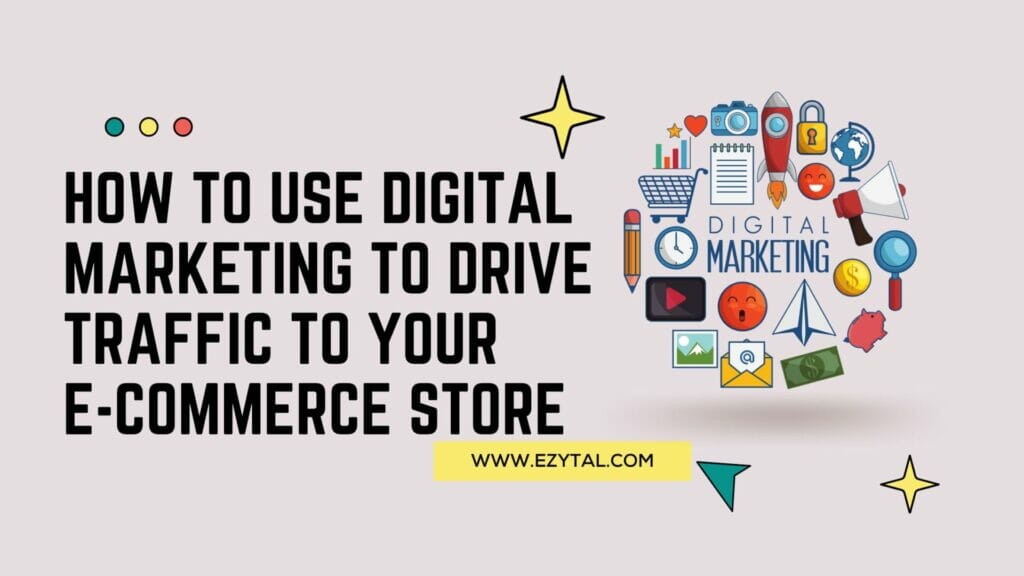Digital marketing is essential for any eCommerce business. Using digital marketing strategies, companies can connect with more customers and increase sales. The following are some of the best digital marketing strategies for eCommerce businesses: 1. Use social media platforms to connect with potential customers and promote your products or services. Social media—mainly, Facebook, Instagram, and Twitter—is one of the most commonly used digital marketing strategies for eCommerce businesses. Even though some people think that social media is a time pass, it is still a very effective way to reach a wide audience. So, how can you utilize social media to drive traffic to your e-commerce store? Post engaging content. You should post content that is engaging, relevant, and valuable to your audience. This will encourage your followers to engage with you and spread your message. You can use Facebook Ads to gain new followers who are interested in specific topics and therefore interested in the products or services you offer. Create an account on each of the major platforms and use their business tools to grow your following and message. It takes time to establish a strong presence, so be patient and keep posting new content that will appeal to a wide audience. Use Facebook Ads to grow your audience and drive traffic to your e-commerce website. It is one of the most popular digital marketing strategies for eCommerce businesses because it’s relatively inexpensive and easy to set up and run. You can target people who are likely to buy a product or are interested in a topic. Set up an ad with a catchy caption and an image that will attract the attention of the viewer. Make sure the length of the ad is not too long—people are less likely to read an entire page of text. Once you’ve created an effective ad, you will be able to spend your money wisely and get the most out of your traffic. It’s important to track the results of your ad in order to improve your future campaigns. You should encourage visitors to click on Facebook’s “Follow” button on your website via text or caption overlay so they can stay updated on new products, promotions, and blog posts. Make it easy for them to click the Facebook Follow button by making it large, placing it near the top of your website, and captioning it “Follow us on Facebook.” Once visitors click the button, they’ll be directed to your business Facebook page, where they can see all of the latest updates. This will encourage them to click “Like” on your page, which will increase your SEO and visibility. You can make it easy for visitors to engage with your brand via Facebook Messenger. This in-browser messenger allows you to create a dedicated tab on your website. The Messenger interface will appear once visitors click the tab. You can create a custom welcome message, provide links to relevant pages or products, or gather customer information through a form. You can use YouTube to create and share video content that will educate and engage your viewers. The videos you create could include product demonstrations, tutorials, styling tips, or educational content. Make sure to include a call-to-action at the end of your video, encouraging viewers to click your website link or the product page. You can encourage visitors to engage with your brand on LinkedIn via a widget that appears after they click the LinkedIn Follow button on your website. The interface will direct them to your LinkedIn business page, where they can see all of the latest updates. You can encourage visitors to follow your pinboard via a widget that appears after they click the Pinterest Follow button on your website. The interface will direct them to your pin board, where they can see all of the latest updates. 2. Use search engine optimization (SEO) to ensure your eCommerce website appears as the top result for relevant searches. SEO helps your website reach potential customers via search engines such as Google. You can optimize your SEO by making sure each of your web pages is relevant to a given keyword or phrase. The more times your website appears in search results for that term, the more likely visitors will click on your page. It’s also a good idea to make use of header tags, such as H1, which denotes the title of your website or blog. By using these tags, you ensure that the most important information on your web pages is displayed in large type. By incorporating alt tags into your website content, you can make your pages more searchable via image searches. This helps prospective customers who don’t want to type in their search queries. They can simply click on your website images to find out more about your products or services. You can encourage visitors to share your website content via social sharing buttons, such as those on Facebook, Twitter, etc. This promotes your brand across various platforms, which helps broaden your audience. There are many free and paid tools that you can use to build a form that will collect subscribers’ emails. You can then utilize these contacts to send timely promotions and sales notifications. By using relevant keywords and phrases in your header and body content, you can improve the click-through rate of your web pages. This means that the searches resulting in clicks onto your site can be highly targeted and conversions should follow. 3. Use email marketing to send promotional messages or coupons to customers who have subscribed to your email list. How to build an effective email campaign You should also consider using a service like MailChimp to build and send professional emails. 4. Use pay-per-click (PPC) advertising to get your eCommerce website in front of potential customers who are searching for products or services like yours. PAY-PER-CLICK (PPC) ADVERTISING Pay-per-click (PPC) advertising is where an advertiser pays a platform, such as Google when their ad is clicked. You can set a budget for how much you


